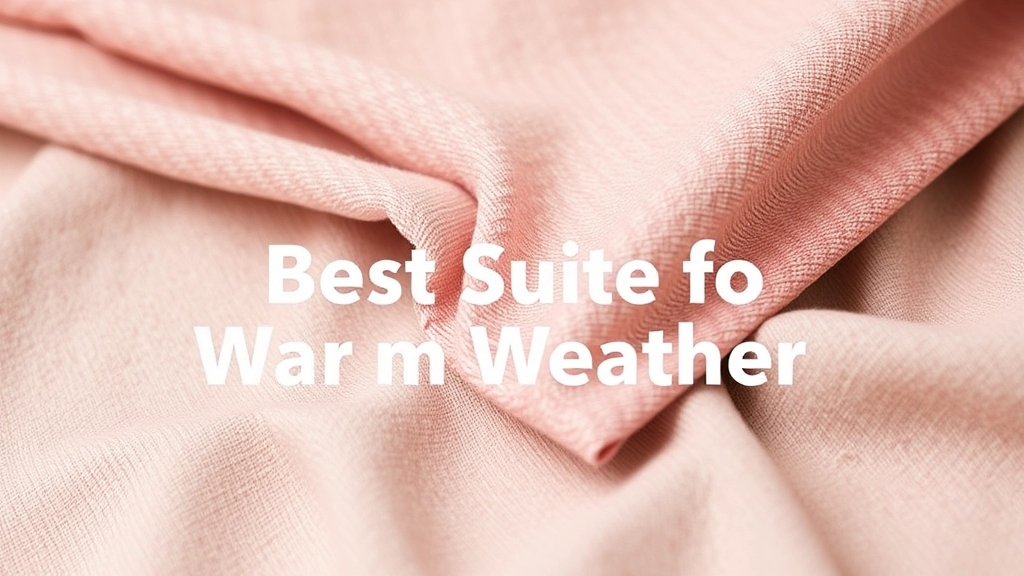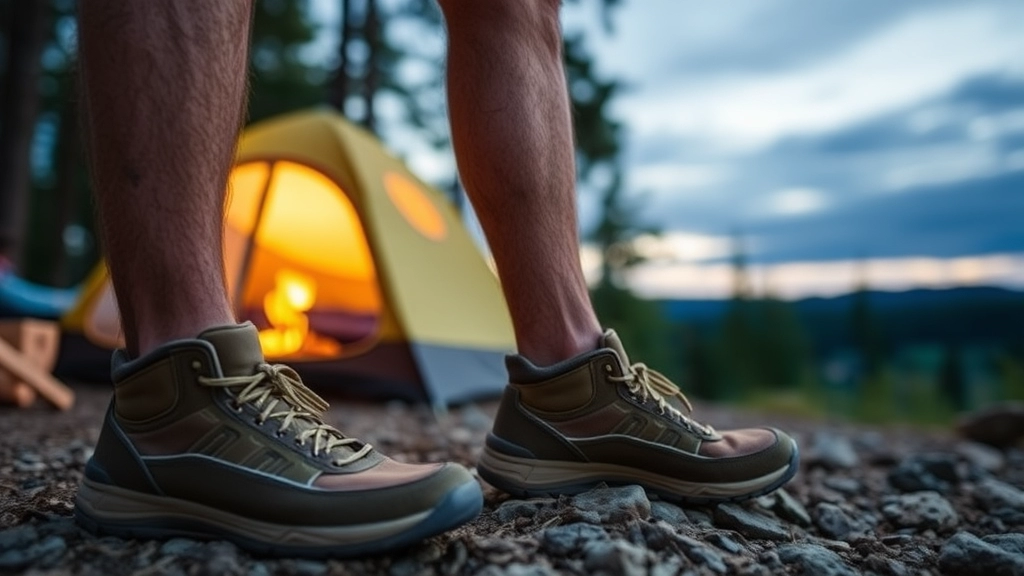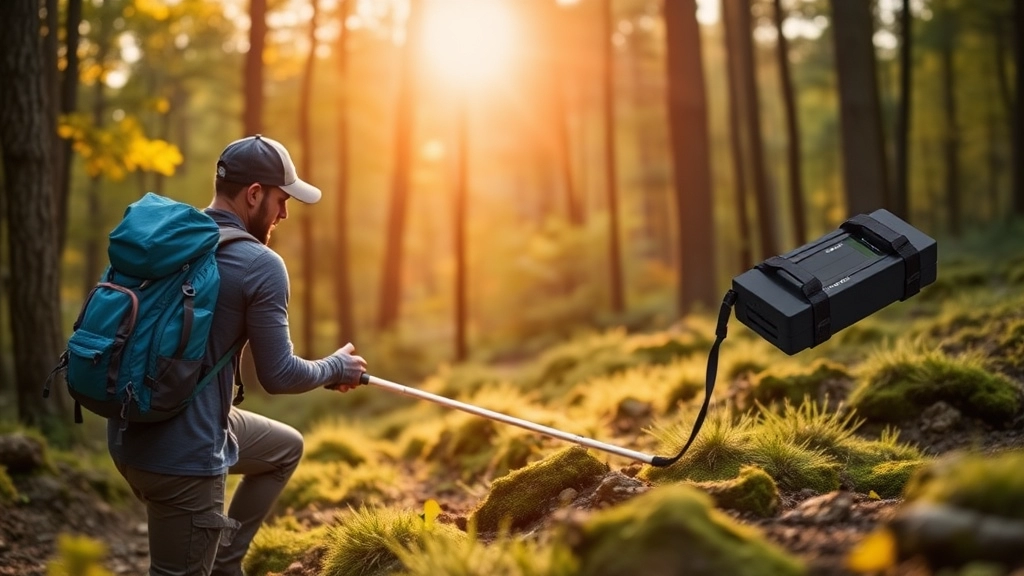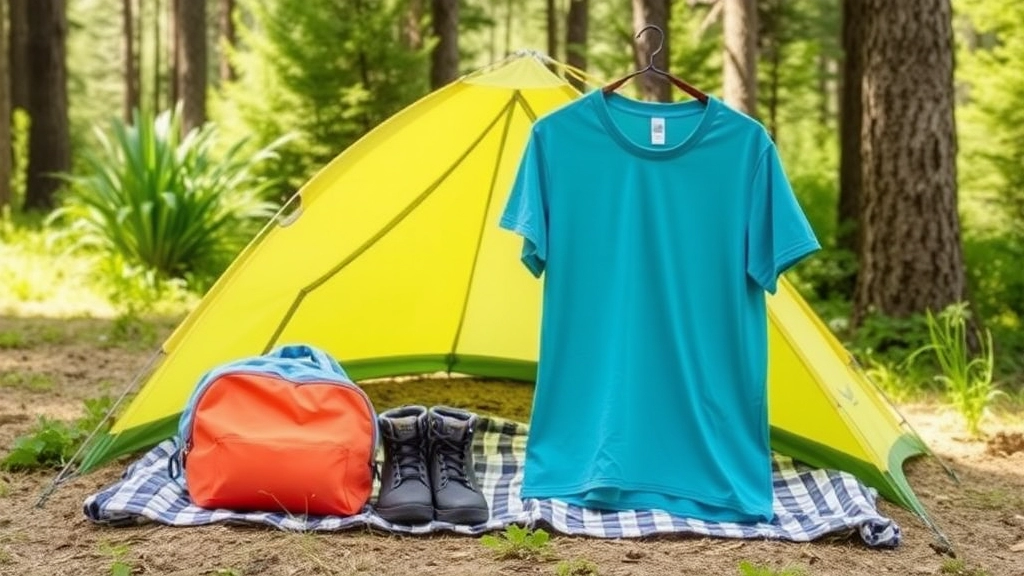Summer Camping Clothing Guide
Summer camping is a thrilling adventure, but packing the right clothes can make all the difference between an enjoyable trip and a miserable one. In this guide, we’ll dive into essential summer camping clothing items, from breathable t-shirts and versatile layers to sun protection accessories and comfortable footwear. We’ll also explore fabrics best suited for warm weather, layering techniques, and budget-friendly options, ensuring you stay cool, comfortable, and prepared for any situation.
Choosing the Right Clothes
Choosing the right clothes for summer camping involves more than just picking out a few t-shirts and shorts. We’ll cover the importance of breathable and moisture-wicking materials, lightweight and packable options, and sustainable clothing choices. Plus, we’ll provide practical tips for staying comfortable and cool, all while keeping your budget in mind. Whether you’re a seasoned camper or a newbie, this guide will help you pack smart and enjoy your summer camping experience to the fullest.
Essential Summer Camping Clothing Items
Alright, let’s get into the nitty-gritty of summer camping clothing. You’re gearing up for a summer camping trip, and the big question is: What should you pack? You don’t want to overpack, but you also don’t want to be caught unprepared. So, let’s break it down.
1. Breathable T-Shirts and Tops
First things first, you need breathable t-shirts and tops. When it’s hot, you want something that keeps you cool and dry. Look for materials like cotton blends or moisture-wicking fabrics. Trust me, the last thing you want is to be drenched in sweat.
2. Lightweight Shorts and Trousers
Next up, lightweight shorts and trousers. You need options to switch between depending on the terrain and weather. Shorts are great for daytime hikes, but you’ll want trousers for those cooler evenings or if you’re trekking through brush.
3. Quick-Dry Underwear
Don’t underestimate the importance of quick-dry underwear. It’s a game-changer. You’ll thank yourself when you’re not dealing with damp, uncomfortable undies.
4. Versatile Layers
Now, let’s talk about versatile layers. Even in summer, temperatures can drop at night. Pack a lightweight fleece or a long-sleeve shirt. It’s all about being prepared for those unexpected chills.
5. Sun Protection Clothing
Sunburn can ruin your trip faster than you can say SPF. Sun protection clothing like long-sleeve shirts with UPF protection is essential. And don’t forget a wide-brimmed hat!
6. Comfortable Footwear
Lastly, comfortable footwear is non-negotiable. Whether it’s hiking boots or sturdy sandals, make sure they’re broken in and ready for the trails.
Real Concerns and Solutions
You might be thinking, âDo I really need all this stuff?â Absolutely. Here’s why:
- Sweat Management: Breathable fabrics keep you cool and dry.
- Versatility: Layering helps you adapt to temperature changes.
- Protection: Sun-protective clothing shields you from harmful UV rays.
- Comfort: Proper footwear prevents blisters and injuries.
Quick Tips for Packing
- Roll, don’t fold: Rolling saves space and reduces wrinkles.
- Pack multi-use items: A long-sleeve shirt can double as a light jacket.
- Prioritise comfort: If it’s not comfortable at home, it won’t be comfortable in the wild.
Personal Anecdote
Last summer, I went camping in the Lake District. I thought I was all set with just a few t-shirts and shorts. Big mistake. The second night, temperatures dropped, and I was freezing. Luckily, I had packed a lightweight fleece, and it saved me. Lesson learned: Always be prepared for temperature swings.
For more tips on capturing your camping experience, check out our guide on stunning summer camping photos. And if you’re looking for engaging activities, don’t miss our top summer camp games and activities guide.
Fabrics Best Suited for Warm Weather

Ever wondered what to wear when camping in the summer? You’re not alone. Choosing the right fabrics can make or break your camping experience. Let’s dive into it.
Why Fabric Choice Matters
When it’s hot, the wrong fabric can turn your camping trip into a sweaty nightmare. Here’s what you need to know.
Top Fabrics for Summer Camping
Cotton
- Pros: Breathable, soft, comfortable.
- Cons: Holds moisture, so not great if you sweat a lot.
Linen
- Pros: Lightweight, dries quickly.
- Cons: Wrinkles easily, can be a bit pricey.
Merino Wool
- Pros: Breathable, moisture-wicking, odour-resistant.
- Cons: Can be expensive, not as durable as synthetics.
Synthetic Fabrics (like Polyester and Nylon)
- Pros: Durable, quick-drying, often moisture-wicking.
- Cons: Can feel less breathable, sometimes less comfortable.
Real Talk: What Works Best?
Imagine you’re out there, sun blazing, and you’re stuck in a sticky shirt. Not fun, right? That’s why breathable and moisture-wicking materials are your best bet.
Quick Tips for Fabric Selection
- Breathability: Look for fabrics that allow air to flow.
- Moisture-Wicking: This keeps sweat off your skin.
- Lightweight: You don’t want to feel weighed down.
Personal Story
I once wore a heavy cotton shirt on a summer hike. Big mistake. By midday, it felt like I was carrying an extra kilo. Since then, I’ve switched to merino wool and never looked back.
Layering Techniques for Variable Temperatures
Ever been camping and found yourself shivering in the morning and sweating by noon? Yeah, we’ve all been there. The trick to staying comfortable in these unpredictable conditions is layering. Let’s break it down so you can master this essential camping skill.
Why Layering Matters
When you’re camping, temperatures can swing wildly from dawn to dusk. Having the right layers can mean the difference between a fantastic trip and a miserable one. Imagine waking up to a chilly morning, but by midday, you’re stripping off layers to stay cool. Layering helps you adapt quickly to these changes.
The Base Layer: Your Second Skin
The base layer is like your second skin. It’s the first thing you put on and the last thing you take off. Its job is to wick moisture away from your body, keeping you dry and comfortable. Think of it as your personal climate control system.
- Material: Go for moisture-wicking fabrics like merino wool or synthetic blends. Avoid cotton because it absorbs sweat and takes forever to dry.
- Fit: It should be snug but not too tight. You want it to move with you.
The Mid Layer: Insulation Station
This is your warmth layer. When the temperature drops, you need something that traps heat but still breathes. The mid layer is your best friend in the early mornings and late evenings.
- Material: Fleece, down, or synthetic insulation works best. Each has its pros and cons, but fleece is often the go-to for its breathability and warmth.
- Fit: A bit looser than the base layer to allow for airflow and additional layers underneath.
The Outer Layer: Weather Warrior
Your outer layer is your shield against the elements. Whether it’s wind, rain, or snow, this layer keeps you protected.
- Material: Look for waterproof and windproof materials like GORE-TEX or other breathable membranes.
- Fit: Should be roomy enough to fit over your other layers but not so loose that it flaps around in the wind.
Real-Life Example: My Weekend in the Peaks
Last summer, I went camping in the Peak District. Mornings were freezing, but by midday, the sun was blazing. My layering system saved me. I started with a merino wool base layer, added a fleece mid layer for warmth, and topped it off with a lightweight, waterproof jacket. By noon, I was down to just my base layer, feeling comfortable and cool.
Footwear Options for Summer Camping

Ever wondered what the best footwear for summer camping is?
You’re not alone.
Choosing the right shoes can make or break your trip.
So let’s dive in.
Why Footwear Matters
You want comfort, durability, and versatility.
But how do you pick the right pair?
Here’s what I’ve learned.
Types of Footwear
- Hiking Boots: Sturdy and supportive. Great for rocky trails.
- Trail Runners: Lightweight and breathable. Perfect for fast-paced hikes.
- Sandals: Ideal for lounging around camp. Look for ones with good grip.
- Water Shoes: Essential for river crossings or beach days.
Key Features to Look For
- Breathability: Keeps your feet cool.
- Water Resistance: Protects against unexpected rain.
- Grip: Prevents slips on wet surfaces.
- Comfort: No one wants blisters.
Personal Story
I once wore the wrong shoes on a hike.
Big mistake.
Blisters for days.
Now, I always opt for trail runners.
Lesson learned.
Quick Tips for Choosing Footwear
- Test Them First: Wear them around the house.
- Check the Weather: Adjust your choice accordingly.
- Pack an Extra Pair: Just in case.
Sun Protection Clothing and Accessories
Ever been on a camping trip and ended up looking like a lobster? No fun, right? Sun protection clothing and accessories are essential for summer camping. Trust me, you don’t want to spend your trip nursing sunburns. So, let’s dive into what you need to stay sun-safe while having a blast in the great outdoors.
Why Sun Protection Clothing Matters
First off, why bother? Well, prolonged exposure to UV rays can lead to skin damage, premature aging, and even skin cancer. Yikes! So, it’s crucial to gear up with sun protection clothing. Here’s what you need to consider:
- UPF Ratings: Look for clothes with a UPF (Ultraviolet Protection Factor) rating. A UPF of 50+ is ideal, blocking out 98% of UV rays.
- Coverage: Long sleeves, high collars, and long trousers offer more protection. Yes, even in the heat, it’s worth it.
- Material: Lightweight, tightly woven fabrics are your best bet. They block UV rays better than loose, open-weave fabrics.
Essential Sun Protection Clothing Items
Alright, let’s get specific. Here are the must-haves for your summer camping wardrobe:
- Long-Sleeved Shirts: Opt for breathable, moisture-wicking materials. They keep you cool while protecting your skin.
- Wide-Brimmed Hats: A hat with a brim all around shields your face, neck, and ears. Go for one with a chin strap to keep it secure on windy days.
- Sunglasses: Protect your eyes with UV-blocking sunglasses. Look for ones that block 100% of UVA and UVB rays.
- Lightweight Trousers: Pants with UPF protection are a great choice. They keep the sun off your legs and can also protect against bugs and brush.
Accessories for Extra Protection
Don’t forget the accessories! They can make a big difference:
- Neck Gaiters: These versatile pieces can be worn around your neck, pulled up over your face, or even as a headband.
- UV-Blocking Umbrellas: Perfect for when you’re taking a break and need some instant shade.
- Arm Sleeves: If you prefer short sleeves but need extra protection, UV-blocking arm sleeves are a great compromise.
Real Talk: Practical Tips
Alright, let’s get real. Here are some practical tips to keep you cool and protected:
- Stay Hydrated: Drink plenty of water. Dehydration can make you more susceptible to sunburn.
- Take Breaks in the Shade: Give your skin a rest by taking breaks in shaded areas.
- Apply Sunscreen: Even with protective clothing, apply a high-SPF sunscreen to exposed skin. Reapply every two hours or after swimming/sweating.
Budget-Friendly Sun Protection Clothing
Worried about the cost? No sweat. You don’t have to break the bank to stay protected. Here are some budget-friendly options:
- Thrift Shops: You’d be surprised at the quality finds in second-hand stores.
- Sales and Discounts: Keep an eye out for sales, especially at the end of the summer season.
- DIY Solutions: Can’t find UPF clothing? Wear regular clothes and apply a UV-blocking spray.
Sustainable and Eco-Friendly Choices
If you’re eco-conscious, there are plenty of sustainable options:
- Recycled Fabrics: Look for brands that use recycled materials.
- Organic Cotton: Organic cotton is not only better for the environment but also gentle on your skin.
- Fair Trade: Support brands that ensure fair wages and safe working conditions for their workers.
For more tips on making your summer camp experience enjoyable, check out our Ultimate Packing Checklist and learn how to choose the best outfits for camp.
Lightweight and Packable Options

Alright, let’s talk about lightweight and packable options for summer camping.
Ever found yourself lugging around a heavy backpack, sweating buckets, and cursing your life choices? Yeah, me too.
Here’s the deal: lightweight and packable clothing is a game-changer.
Why?
Because it makes your camping experience way more enjoyable. No one wants to feel like they’re carrying a ton of bricks on their back.
What to Look For
- Material Matters: Opt for materials like nylon and polyester. They’re lightweight and dry quickly.
- Packability: Look for clothes that can be easily stuffed into your backpack without taking up much space.
- Multi-Functional: Go for items that serve multiple purposes. A lightweight jacket that doubles as a raincoat? Yes, please.
My Go-To Gear
- Packable Jacket: Always have a lightweight, water-resistant jacket. It’s a lifesaver when the weather turns.
- Convertible Pants: These are trousers that can turn into shorts. Perfect for fluctuating temperatures.
- Compact T-Shirts: Quick-dry, moisture-wicking t-shirts are a must. They keep you cool and dry.
Real Talk
Imagine this: You’re hiking up a trail, and the sun’s beating down. You’re sweating, tired, and your backpack feels like it’s filled with lead.
Now, picture the same scenario, but this time, your gear is lightweight and barely noticeable.
Feels good, right?
That’s why this stuff matters.
Packing Tips
- Roll, Don’t Fold: Rolling your clothes saves space and reduces wrinkles.
- Use Compression Bags: These can shrink your clothes down to a fraction of their size.
- Prioritise Essentials: Only pack what you need. Leave the “just in case” items at home.
Choosing Breathable and Moisture-Wicking Materials
Alright, let’s dive right in. When it comes to summer camping, choosing breathable and moisture-wicking materials can make or break your experience. Ever found yourself drenched in sweat, feeling like you’re wearing a plastic bag? Yeah, that’s what we’re avoiding here.
Why Breathable and Moisture-Wicking Materials Matter
First off, let’s talk about why these materials are so crucial. Imagine hiking up a steep trail, the sun blazing down, and your shirt sticking to you like cling film. Not fun, right? Breathable and moisture-wicking fabrics help you stay cool and dry by allowing air to circulate and sweat to evaporate.
Here’s why you need them:
- Comfort: Keeps you dry and reduces chafing.
- Temperature Regulation: Helps maintain your body temperature.
- Odour Control: Less sweat means less smell.
What to Look For
So, what should you look for when picking out these magical fabrics?
- Polyester: This is your go-to for moisture-wicking. It’s lightweight and dries quickly.
- Merino Wool: Don’t let the word ‘wool’ scare you. Merino wool is soft, breathable, and naturally antimicrobial.
- Nylon: Durable and moisture-wicking, but can be less breathable than polyester.
- Bamboo: An eco-friendly option that’s breathable and has natural moisture-wicking properties.
Real Talk: My Go-To Picks
I’ve tried and tested a bunch of stuff, and here are my top picks:
- T-Shirts: Look for polyester or a polyester blend. Brands like Patagonia and Columbia have great options.
- Socks: Merino wool socks are a game-changer. Trust me, your feet will thank you.
- Underwear: Go for moisture-wicking options like ExOfficio. Keeps everything fresh and dry.
Quick Tips for Choosing the Right Gear
- Check the Label: Always look for terms like ‘moisture-wicking,’ ‘breathable,’ and ‘quick-dry.’
- Feel the Fabric: Give it a touch test. If it feels heavy or plasticky, it’s probably not breathable.
- Read Reviews: See what other campers are saying. Sometimes the best advice comes from people who’ve been there, done that.
A Little Story to Drive It Home
A couple of summers ago, I went on a camping trip with a buddy who thought cotton was the way to go. By midday, he was a sweaty mess, while I was cool and comfortable in my polyester gear. Lesson learned: the right materials make all the difference.
For more tips on making the most out of your summer camping experience, check out our guide on top tips and gear essentials. And if you’re planning a trip to the OC, don’t miss our top picks and tips for 2024.
Tips for Staying Comfortable and Cool

Ever been stuck in a tent, sweating buckets, wondering why you didn’t plan better? Yeah, me too.
Staying cool while camping in the summer can be a real challenge. But don’t worry, I’ve got you covered with some straightforward, no-nonsense tips.
Dress Smart, Not Hard
First things first, let’s talk about what you’re wearing. Cotton might seem like a good idea, but it holds onto sweat like a clingy ex. Instead, go for breathable and moisture-wicking materials. Think polyester or merino wool. These fabrics pull sweat away from your skin, keeping you dry and cool.
Layer Like a Pro
Even in summer, temps can drop at night. Layering is key. Start with a lightweight base layer to wick away moisture. Add a breathable mid-layer for insulation, and top it off with a light jacket you can easily stash away when it warms up.
Footwear Matters
Your feet need love too. Opt for ventilated hiking shoes or sandals. Trust me, your feet will thank you.
Stay Hydrated
This might seem obvious, but it’s crucial. Dehydration can sneak up on you. Always have a water bottle handy. Better yet, invest in a hydration pack.
Find Shade
Set up camp in a shady spot if possible. No trees? No problem. Bring a portable canopy or tarp. It’s a game-changer.
Use Cooling Accessories
Ever tried a cooling towel? Wet it, wring it, and drape it around your neck. Instant relief.
Ventilation is Your Friend
Keep your tent cool by opening all the vents and windows. Some tents even have built-in fans. If yours doesn’t, a small battery-operated fan can make a big difference.
Wear a Hat
A wide-brimmed hat can shield you from the sun and keep your head cool. Bonus points if it’s made from a breathable material.
Plan Your Activities Wisely
Avoid strenuous activities during the peak heat of the day. Early mornings or late afternoons are your best bet.
Take Breaks
Don’t be a hero. Take regular breaks in the shade to cool down.
Sun Protection
Never underestimate the power of sunscreen. Apply it liberally and often. Sunburn can ruin your trip faster than you can say “SPF.”
Light Colours
Dark colours absorb heat. Stick to light-coloured clothing to reflect the sun’s rays.
Travel Light
The less you carry, the less you’ll sweat. Pack only the essentials.
Stay Informed
Check the weather forecast before you go. Knowing what to expect can help you pack smarter.
Got any cool tips of your own? Share them in the comments!
Budget-Friendly Clothing Choices for Campers
Finding Affordable Camping Gear Without Sacrificing Quality
Alright, let’s get real. Summer camping is awesome, but it can get pricey. Do you find yourself wondering, âHow can I gear up without emptying my wallet?â You’re not alone. Let’s dive into some budget-friendly clothing choices for campers that won’t leave you broke.
Why Budget-Friendly Camping Clothes Matter
First off, camping is supposed to be a stress-free escape, not a financial burden. You don’t need to splurge on high-end brands to get quality gear. Here’s the lowdown on how to get the best bang for your buck.
Thrift Stores and Second-Hand Shops
One of my go-to tips? Thrift stores. You’d be surprised at the gems you can find:
- Gently used outdoor gear: Jackets, pants, even boots.
- Seasonal sales: Keep an eye out for end-of-season sales where prices drop significantly.
Online Marketplaces
Don’t overlook online marketplaces like eBay, Depop, or Facebook Marketplace. These platforms are gold mines for affordable camping clothes:
- Used but good condition: Look for items that are lightly worn.
- Bulk purchases: Sometimes, you can score a bundle deal that includes multiple items for less.
Off-Brand Alternatives
Big brands aren’t the only game in town. Plenty of off-brand options offer similar quality at a fraction of the price:
- Decathlon: Known for affordable, yet durable outdoor gear.
- Uniqlo: Their basics are often moisture-wicking and breathable, perfect for summer camping.
DIY Fixes and Alterations
Got some old clothes lying around? Give them a new life with a few tweaks:
- Cut-off shorts: Turn old jeans into camping-ready shorts.
- Layering old tees: Use old t-shirts for layering, perfect for variable temperatures.
Seasonal Sales and Discounts
Timing is everything. Plan ahead and buy your gear during seasonal sales:
- Black Friday/Cyber Monday: Great for snagging deals.
- End-of-season clearances: Stores often slash prices to make way for new inventory.
Renting Gear
If you’re not a frequent camper, renting might be your best bet:
- Local outdoor shops: Many offer rental services.
- Online rental services: Websites like Gearo and REI Rentals are worth checking out.
Community Groups and Swaps
Join local camping or outdoor groups on social media. You’d be amazed at how many people are willing to swap or sell gear for cheap:
- Gear swaps: Often organised by local outdoor clubs.
- Community forums: Reddit and Facebook groups are great places to find deals.
For more tips on essential items to bring, check out our Summer Camp Essentials: Ultimate Packing Guide and if you’re looking for creative ways to make your camping experience more fun, don’t miss our Creative Summer Camp Themes for All Ages.
Sustainable and Eco-Friendly Clothing Options
Ever thought about how your camping gear impacts the planet?
I did, and it was a game-changer.
Sustainable and eco-friendly clothing options are not just a trend; they’re a necessity.
Let’s dive into why and how you can make better choices.
Why Go Sustainable?
First off, traditional clothing manufacturing is harsh on the environment.
- Tons of water usage
- Harmful chemicals
- Non-biodegradable materials
Switching to sustainable options reduces your carbon footprint.
Plus, it feels good to know you’re doing your bit for Mother Earth.
What to Look For
- Organic Cotton: Grown without pesticides. Soft and breathable.
- Bamboo: Fast-growing and requires less water. Super soft.
- Recycled Fabrics: Made from plastic bottles or old garments. Keeps waste out of landfills.
- Hemp: Strong, durable, and requires minimal water.
Brands That Get It Right
- Patagonia: Known for recycled materials and fair trade practices.
- Tentree: Plants ten trees for every item sold.
- Prana: Focuses on organic and recycled materials.
These brands are leading the charge in eco-friendly outdoor gear.
Real Talk: Costs and Benefits
Yes, sustainable clothing can be pricier.
But think of it as an investment.
You get:
- Longer-lasting gear
- Better performance
- Peace of mind
I once bought a cheap, fast-fashion jacket for a camping trip.
It fell apart after one season.
Then I switched to a Patagonia jacket.
Still going strong after three years.
Practical Tips for Eco-Friendly Camping Wardrobe
- Start Small: Replace one item at a time.
- Research: Check the brand’s sustainability practices.
- Second-Hand: Thrift stores and online marketplaces are gold mines.
- Care for Your Gear: Proper washing and storage extend the life of your clothes.
For more ideas on how to make your camping experience even better, check out our guide on summer camping outfits.
Also, don’t miss our tips on capturing stunning summer camping photos to make your trip memorable.
FAQs on Clothes for Summer Camping
What fabrics are best for summer camping?
Choosing the right fabric is crucial for staying comfortable. The best fabrics for summer camping include cotton, linen, merino wool, and synthetic fabrics like polyester and nylon. Each has its own pros and cons, so choose based on your specific needs.
Why should I avoid cotton if I sweat a lot?
Cotton is breathable and comfortable, but it holds moisture. If you sweat a lot, cotton can become heavy and sticky, making you uncomfortable. Opt for moisture-wicking fabrics instead.
What are the advantages of merino wool for summer camping?
Merino wool is breathable, moisture-wicking, and odour-resistant. However, it can be expensive and is not as durable as synthetic fabrics.
Are synthetic fabrics a good choice for summer camping?
Yes, synthetic fabrics like polyester and nylon are durable, quick-drying, and often moisture-wicking. However, they may feel less breathable and comfortable compared to natural fabrics.
What footwear should I consider for summer camping?
For summer camping, consider hiking boots for rocky trails, trail runners for fast-paced hikes, sandals for lounging around camp, and water shoes for river crossings or beach days.
What features should I look for in summer camping footwear?
Look for footwear that offers breathability, water resistance, good grip, and comfort to avoid blisters.
Why is lightweight and packable clothing important for summer camping?
Lightweight and packable clothing makes your camping experience more enjoyable by reducing the weight you carry. Opt for materials like nylon and polyester, which are lightweight and dry quickly.
What are some tips for packing lightweight and packable clothing?
Roll your clothes instead of folding them to save space and reduce wrinkles. Use compression bags to shrink your clothes down, and prioritize packing essentials only.
How can I stay cool while camping in the summer?
Stay cool by wearing breathable and moisture-wicking materials, layering your clothing, using ventilated footwear, staying hydrated, and setting up camp in a shady spot. Also, consider using cooling accessories like cooling towels and portable fans.
Why should I wear a wide-brimmed hat during summer camping?
A wide-brimmed hat shields you from the sun and keeps your head cool. Choose one made from breathable material for added comfort.
What are some tips for sun protection while camping?
Apply sunscreen liberally and often, wear light-coloured clothing to reflect the sun’s rays, and take regular breaks in the shade to cool down.
References
-
Best Fabrics for Hot Weather Camping
-
Best Hiking Shoes for Summer
-
Best Lightweight Jackets for Summer Camping

